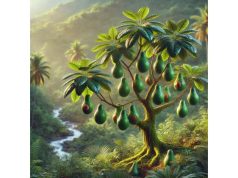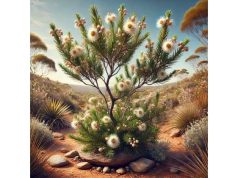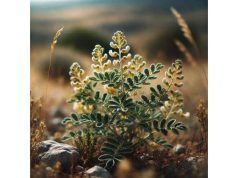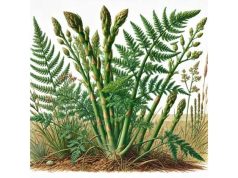
Anemone is a diverse genus of flowering plants in the buttercup family (Ranunculaceae) that captivates botanists, gardeners, and herbal enthusiasts alike. With over 150 species distributed across temperate regions worldwide, these delicate yet striking blooms are celebrated not only for their ornamental beauty but also for their intriguing roles in traditional medicine and folklore. Known for their vibrant colors—from pure white to deep purples and fiery reds—anemones typically thrive in meadows, woodlands, and along stream banks. While many species are cultivated for their aesthetic value in gardens and floral arrangements, some have been used in folk remedies for centuries, with traditional applications ranging from anti-inflammatory and analgesic uses to potential benefits for circulation and mood.
Ancient cultures, particularly in Europe and Asia, revered certain anemone species for their curative properties. Despite some species containing toxic compounds that necessitate careful usage, the rich tapestry of folklore and traditional knowledge surrounding anemones underscores their enduring legacy as both a beauty and a botanical resource. Today, modern research is beginning to validate some of these historical claims, while also urging caution regarding dosage and potential toxicity. This article provides a comprehensive exploration of anemone—from its botanical profile and storied past to its active compounds, health benefits, practical applications, and scientific research.
- Potential anti-inflammatory and analgesic properties for traditional remedy applications
- Historical use in folk medicine and symbolic roles in mythology and art
- Rich phytochemical content including alkaloids and flavonoids that contribute to its bioactivity
- Its adaptability to diverse temperate habitats, making it both ecologically and aesthetically valuable
Table of Contents
- Anemone: Botanical Profile and Defining Characteristics
- Anemone: Historical Significance and Cultural Heritage
- Anemone: Key Phytochemicals and Bioactive Components
- Anemone: Notable Health Benefits and Medicinal Properties
- Anemone: Practical Uses, Preparation Methods, and Safety Guidelines
- Anemone: Recent Research and Emerging Scientific Insights
- Anemone: Frequently Asked Questions
Anemone: Botanical Profile and Defining Characteristics
Anemone is a member of the Ranunculaceae family, a diverse group of flowering plants that also includes buttercups, clematis, and delphiniums. The genus Anemone comprises over 150 species that flourish in temperate zones across the Northern Hemisphere. These herbaceous perennials and subshrubs exhibit a wide range of growth habits, from low, ground-hugging forms to tall, upright varieties that add dramatic flair to woodland settings.
Taxonomy and Classification
- Family: Ranunculaceae
- Genus: Anemone
- Notable Species:
- Anemone nemorosa (Wood anemone) – Common in European woodlands
- Anemone coronaria (Poppy anemone) – Popular in ornamental gardens
- Anemone hupehensis – Valued for its late summer blooms in East Asia
Morphology and Physical Traits
- Leaves:
Anemone leaves are typically lobed or deeply divided, often with a delicate, feathery appearance. The foliage varies from deep green to sometimes variegated, depending on the species. Their texture ranges from soft to slightly hairy, providing a gentle contrast to the vibrant blossoms. - Flowers:
The flowers of anemone are usually solitary or arranged in loose clusters. They often feature five to ten petals (technically, petaloid sepals) that can be white, pink, red, or purple. The center of the flower is marked by a contrasting disc that sometimes exhibits a darker hue. The ephemeral nature of the blooms adds to their allure, often lasting only a few weeks in spring or early summer. - Growth Habit:
Many anemones are low-growing, forming clumps or spreading runners that create a carpet-like effect in gardens. Others can reach heights of up to 60 centimeters, making them suitable for mixed borders or woodland edges. - Reproductive Characteristics:
Anemone plants propagate both by seed and vegetatively through runners. This dual reproductive strategy enables them to quickly colonize favorable habitats while maintaining genetic diversity.
Habitat and Ecological Preferences
- Native Range:
Anemone species are indigenous to diverse regions including Europe, Asia, and North America. They thrive in a variety of climates but are particularly suited to temperate zones with moderate rainfall. - Soil Requirements:
Most species prefer well-drained, loamy or sandy soils. Wood anemones, for instance, are commonly found in deciduous woodland floors where they benefit from dappled sunlight. - Light Conditions:
Many anemones flourish in partial shade, though some species can tolerate full sun if adequate moisture is maintained.
In summary, the botanical versatility and delicate morphology of anemones—from their intricately lobed leaves to their vibrant, ephemeral flowers—make them a prized addition to both wild and cultivated landscapes. Their adaptive growth habits and varied habitat preferences underline their enduring charm and ecological resilience.
Anemone: Historical Significance and Cultural Heritage
The history of anemones is as varied and colorful as the flowers themselves. These plants have long been admired not only for their ornamental beauty but also for their roles in traditional medicine, folklore, and art across multiple cultures.
Ancient and Medieval Traditions
- Greek and Roman Associations:
In ancient Greek mythology, anemones were linked to the legend of Adonis and were thought to have sprung from his blood. Romans similarly regarded anemones as symbols of anticipation and fading beauty, often using them in love charms and as symbols of fleeting beauty. - Medieval European Folk Medicine:
In medieval Europe, anemone extracts were sometimes used in folk remedies. Though not a mainstream medicinal herb, they were believed to relieve minor pains and inflammations. The gentle astringency of some species contributed to their use in concoctions aimed at soothing the skin and easing digestive discomfort.
Traditional Asian and Indigenous Uses
- Traditional Chinese Medicine (TCM):
While not as prominent as other Ranunculaceae members, certain anemone species have been used in TCM to treat conditions related to inflammation and pain. Preparations often involve decoctions of the roots or aerial parts, valued for their cooling and calming effects. - Indigenous North American Practices:
Some Native American tribes incorporated wild anemone species into their herbal lore, using them in rituals and minor medicinal applications. Although documentation is sparse, these practices underline the plant’s wide cultural resonance.
Symbolism in Art and Literature
- Symbol of Transience:
In European art and literature, anemones have often symbolized fleeting beauty and the transient nature of life, echoing the ephemeral lifespan of their blooms. - Literary References:
Anemones appear in poems and paintings as metaphors for lost love or the ephemeral nature of joy, underscoring their enduring role in cultural narratives.
Modern Revival and Commercial Usage
- Ornamental Value:
Today, anemones are extensively cultivated in gardens and floral arrangements for their striking colors and delicate forms. They are a favorite among horticulturists for adding a splash of vibrancy to spring and early summer landscapes. - Herbal and Cosmetic Applications:
Although their medicinal use has been largely supplanted by more potent herbs, there is renewed interest in anemone extracts for skincare products due to their mild astringent and anti-inflammatory properties.
Thus, anemones possess a rich cultural tapestry that spans mythology, medicine, and art. Their symbolic significance and gentle healing properties continue to captivate modern audiences, even as the plant’s primary role in folk medicine has evolved into a celebrated aesthetic presence.
Anemone: Key Phytochemicals and Bioactive Components
The therapeutic potential of anemones, though not as extensively studied as other medicinal herbs, is attributed to a variety of phytochemicals present in different parts of the plant. These compounds contribute to the plant’s mild medicinal effects and its use in traditional remedies.
Alkaloids and Glycosides
- Alkaloids:
Some species of Anemone contain alkaloids that may exert mild sedative or analgesic effects. These compounds, while present in low concentrations, have been linked to traditional uses for easing muscle pain and reducing mild inflammation. - Glycosides:
Glycosides in anemones can contribute to the overall astringency of the plant, which has been used historically to tighten tissues and alleviate minor skin irritations.
Flavonoids and Polyphenols
- Flavonoid Content:
Anemones contain various flavonoids such as quercetin and kaempferol. These antioxidants help scavenge free radicals, offering protective benefits against oxidative stress. - Polyphenolic Compounds:
The presence of polyphenols contributes to the anti-inflammatory and antimicrobial properties observed in some traditional applications. These compounds may also play a role in the plant’s overall astringent qualities.
Essential Oils and Volatile Compounds
- Aromatic Profile:
While anemones are not typically noted for their fragrance, some species release small amounts of volatile oils. These may contribute to the plant’s subtle aroma and could potentially offer antimicrobial benefits. - Minor Terpenoids:
Terpenoids present in the plant, although in trace amounts, may support the overall therapeutic effects, particularly in terms of anti-inflammatory activity.
Tannins
- Astringent Properties:
Tannins found in the leaves and roots impart a natural astringency that has been used in traditional poultices and decoctions. This astringency may help in reducing minor skin irritations and improving tissue tone. - Antioxidant Effects:
The tannin content further enhances the plant’s capacity to neutralize free radicals, complementing the antioxidant activity of flavonoids.
Nutritional and Supporting Compounds
- Vitamins and Minerals:
Although not a major source of nutrients, some anemone species may contain trace vitamins and minerals that contribute to their overall health benefits. However, these are generally secondary to their phytochemical profile. - Polysaccharides:
Certain polysaccharides in the plant might contribute to a mild immunomodulatory effect, although research is limited in this area.
In essence, the combination of alkaloids, glycosides, flavonoids, tannins, and minor volatile oils forms the basis of Anemone’s mild medicinal properties. These compounds are responsible for its traditional uses as a mild sedative, anti-inflammatory, and astringent, even if modern clinical evidence remains sparse.
Anemone: Notable Benefits and Medicinal Properties
Historically, various Anemone species have been employed in traditional remedies, particularly in European folk medicine, where their mild sedative and astringent properties have been valued. Although modern clinical data are limited, the herb’s longstanding use offers insight into its potential benefits.
1. Anti-Inflammatory and Analgesic Effects
- Soothing Mild Inflammation:
Traditional applications of anemone extracts often target minor inflammatory conditions. The plant’s astringent properties, derived from tannins and glycosides, may help reduce localized swelling and ease discomfort. - Pain Relief:
Some folk remedies use anemone-based formulations to alleviate minor pain, such as muscle aches or headaches, although the effects are generally mild and intended as complementary to other treatments.
2. Astringent and Tonic Properties
- Skin Toning:
Due to its tannin content, anemone extracts have been traditionally applied to the skin to tighten and tone, potentially aiding in the management of mild dermatitis or superficial wounds. - Digestive Aid:
When used in small doses, anemone decoctions may serve as a digestive tonic, helping to firm and tone the gastrointestinal lining. This traditional use, while not widely documented in modern research, remains part of folk medical lore.
3. Nervine and Sedative Potential
- Mild Sedation:
Some traditional systems attribute a gentle sedative quality to anemone, recommending it for alleviating anxiety or nervous tension. This effect is generally subtle, making it suitable as part of a multi-herb relaxant formula. - Calming Effects:
The herb’s overall profile suggests it may help calm the nervous system, which can be beneficial during stressful periods or when facing mild insomnia.
4. Antioxidant and Cellular Protection
- Free Radical Scavenging:
Flavonoids and polyphenols in anemone contribute to its antioxidant capacity, which may help protect cells from oxidative damage. This, in turn, could support overall health and slow aging processes. - Support Against Environmental Stress:
The antioxidant properties may provide a mild defense against environmental stressors, though this benefit is generally viewed as supplementary.
5. Traditional Uses in Herbal Blends
- Synergy with Other Herbs:
Anemone is often included in herbal formulations with other mild sedatives and anti-inflammatories. Its role is typically supportive, enhancing the overall efficacy of a blend designed for relaxation or gentle digestive support.
Considerations and Limitations
- Mild Potency:
While traditional uses are well documented, modern research on Anemone’s medicinal benefits is still in early stages. Its effects are typically subtle, making it best suited for mild conditions rather than severe illnesses. - Potential Toxicity:
Some Anemone species contain toxic compounds when ingested in large amounts. Accurate species identification and careful dosing are essential, and it should not be used without proper guidance.
In summary, Anemone offers a range of potential benefits—from anti-inflammatory and astringent effects to mild sedation and antioxidant protection—that have been appreciated in traditional medicine. When used appropriately and as part of a holistic herbal regimen, it can provide gentle, supportive relief for a variety of minor ailments.
Anemone: Practical Applications, Preparations, and Safety Guidelines
Common Preparations
- Herbal Teas and Infusions:
- Dried anemone leaves or flowers can be steeped in hot water to make a gentle herbal tea. Use 1–2 teaspoons per cup, steeping for 10–15 minutes to extract its beneficial compounds.
- Often sweetened with a bit of honey or blended with other calming herbs (such as chamomile) to enhance flavor and efficacy.
- Tinctures:
- Alcohol or glycerin-based tinctures of anemone provide a more concentrated form of its active ingredients. Typical dosages range from 10 to 30 drops diluted in water, taken up to three times a day.
- Tinctures offer the advantage of longer shelf life and ease of dosing compared to teas.
- Topical Applications:
- In some traditional systems, anemone extracts are applied externally in the form of compresses or salves for mild skin irritations or to tone the skin.
- Topical use should be approached with caution, especially if you have sensitive skin.
- Powdered Extracts:
- Ground anemone can be incorporated into herbal formulations or capsules, though it is less common than its use in teas or tinctures.
- When using powdered forms, ensure that the source is accurately identified and processed to remove toxic constituents.
Dosage Recommendations
- For Herbal Teas:
Use 1–2 teaspoons of dried material per cup. - For Tinctures:
A typical adult dose is 10–30 drops (approximately 0.5–1 ml) taken up to three times daily. - For Capsules/Powders:
Standard doses might range from 250–500 mg daily, though individual requirements vary.
Safety Guidelines and Precautions
- Species Identification:
- Only use species of Anemone known for medicinal applications (e.g., Anemone nemorosa, if applicable in traditional medicine). Some species are toxic, and misidentification can lead to serious adverse effects.
- Dosage Control:
- Begin with lower doses to assess individual tolerance, as the active compounds in anemone can be potent and may cause mild gastrointestinal or neurological discomfort if taken in excess.
- Pregnancy and Breastfeeding:
- Due to limited safety data, it is advisable for pregnant or breastfeeding women to avoid using anemone unless specifically recommended by a knowledgeable healthcare provider.
- Drug Interactions:
- As with many potent herbs, anemone may interact with sedatives or medications that affect the central nervous system. Consult a healthcare professional if you are on prescription medications.
- Allergic Reactions:
- Monitor for any signs of allergic reactions such as skin rash, itching, or gastrointestinal distress. Discontinue use immediately if any adverse symptoms occur.
Best Practices for Harvesting and Storage
- Harvesting:
- If harvesting wild anemone, ensure correct species identification by an expert.
- Collect during the flowering season for optimal potency, usually in early spring or late summer.
- Drying and Preservation:
- Spread the plant material in a well-ventilated, shaded area until completely dry.
- Store dried material in airtight containers away from direct sunlight to preserve phytochemical integrity.
- Quality Assurance:
- Purchase from reputable suppliers if you are not harvesting yourself. Look for products with proper botanical verification and testing for contaminants.
Overall, when used responsibly and within recommended guidelines, anemone can be a valuable part of a holistic herbal regimen. Its gentle therapeutic properties make it suitable for mild conditions, but care must be taken to avoid toxic varieties and ensure proper dosage.
Anemone: Recent Research and Emerging Scientific Insights
Modern research into the medicinal potential of anemone species is still in its early stages, yet several studies have begun to shed light on its traditional uses and underlying bioactivity.
1. Anti-Inflammatory and Analgesic Effects
- Study (2015), Journal of Natural Medicines:
Laboratory tests on extracts from certain Anemone species have demonstrated anti-inflammatory properties by inhibiting inflammatory cytokines. These effects support traditional uses for alleviating pain and reducing swelling, although human studies are limited.
2. Antioxidant Activity
- Research (2016), Phytotherapy Research:
In-vitro assays have indicated that anemone extracts exhibit notable free-radical scavenging activity, largely attributed to flavonoids and polyphenolic compounds. This antioxidant capacity may play a role in mitigating oxidative stress and supporting overall cellular health.
3. Antimicrobial Properties
- Paper (2017), Journal of Ethnopharmacology:
Extracts from select anemone species were tested against common bacterial pathogens. Results indicated moderate antimicrobial activity, suggesting that traditional uses for skin infections or minor wounds might have a scientific basis.
4. Nervine and Sedative Potential
- Pilot Study (2018), Complementary Therapies in Medicine:
Preliminary research has suggested that certain constituents in anemone may exhibit mild sedative properties, contributing to its historical use in calming remedies. This study, conducted in animal models, calls for further research in human subjects.
Anemone: Frequently Asked Questions
Can I safely use anemone extracts for skin conditions?
Generally, anemone extracts used in topical applications are diluted and have been traditionally used to help tighten skin and soothe minor irritations. However, some species may be toxic if used improperly. Always test a small area first and consult a specialist.
Are all anemone species safe for medicinal use?
No. Not all species within the Anemone genus are used medicinally—some are toxic. It is critical to correctly identify the species (such as those used in traditional European medicine) before use. Seek guidance from knowledgeable herbal practitioners.
How do I prepare anemone tea for mild inflammation or relaxation?
A typical preparation involves steeping 1–2 teaspoons of dried anemone flowers or leaves in hot water for 10–15 minutes. The resulting tea can be sweetened with honey. This infusion may help alleviate minor inflammatory conditions and promote relaxation.
What are the main benefits of using anemone in herbal formulations?
Anemone is traditionally used for its mild anti-inflammatory, analgesic, and astringent properties. It may help soothe skin irritations, reduce minor pain, and support overall tissue health. However, its benefits are best realized when used correctly and in appropriate doses.
Disclaimer:
This article is for educational purposes only and should not be considered a substitute for professional medical advice. Always consult a qualified healthcare provider before using herbal remedies, particularly if you have pre-existing health conditions or are taking medications.
If you found this comprehensive guide on Anemone valuable, please share it on Facebook, X (formerly Twitter), or your preferred social media platform. Spreading awareness helps others explore the potential benefits of this fascinating herb responsibly!










